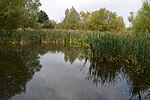Baldock services
2001 establishments in EnglandA1(M) motorway service stationsBuildings and structures in HertfordshireExtra motorway service stationsNorth Hertfordshire District ... and 2 more
Transport in HertfordshireUse British English from April 2017

Baldock services is a motorway service station on the A1(M) motorway near Baldock in Hertfordshire, England. It is operated by Extra. Work on the service area started in March 2000, with the services opening on 22 January 2001.As well as a hotel, restaurants, shops and a petrol station, Baldock services has facilities for the rapid charging of electric cars, operated under the Ecotricity (Electric Highway) public charging network.
Excerpt from the Wikipedia article Baldock services (License: CC BY-SA 3.0, Authors, Images).Baldock services
Geographical coordinates (GPS) Address External links Nearby Places Show on map
Geographical coordinates (GPS)
| Latitude | Longitude |
|---|---|
| N 52.014271 ° | E -0.20182 ° |
Address
ExtraMSA Baldock Services
SG7 5TR , Stotfold
England, United Kingdom
Open on Google Maps








